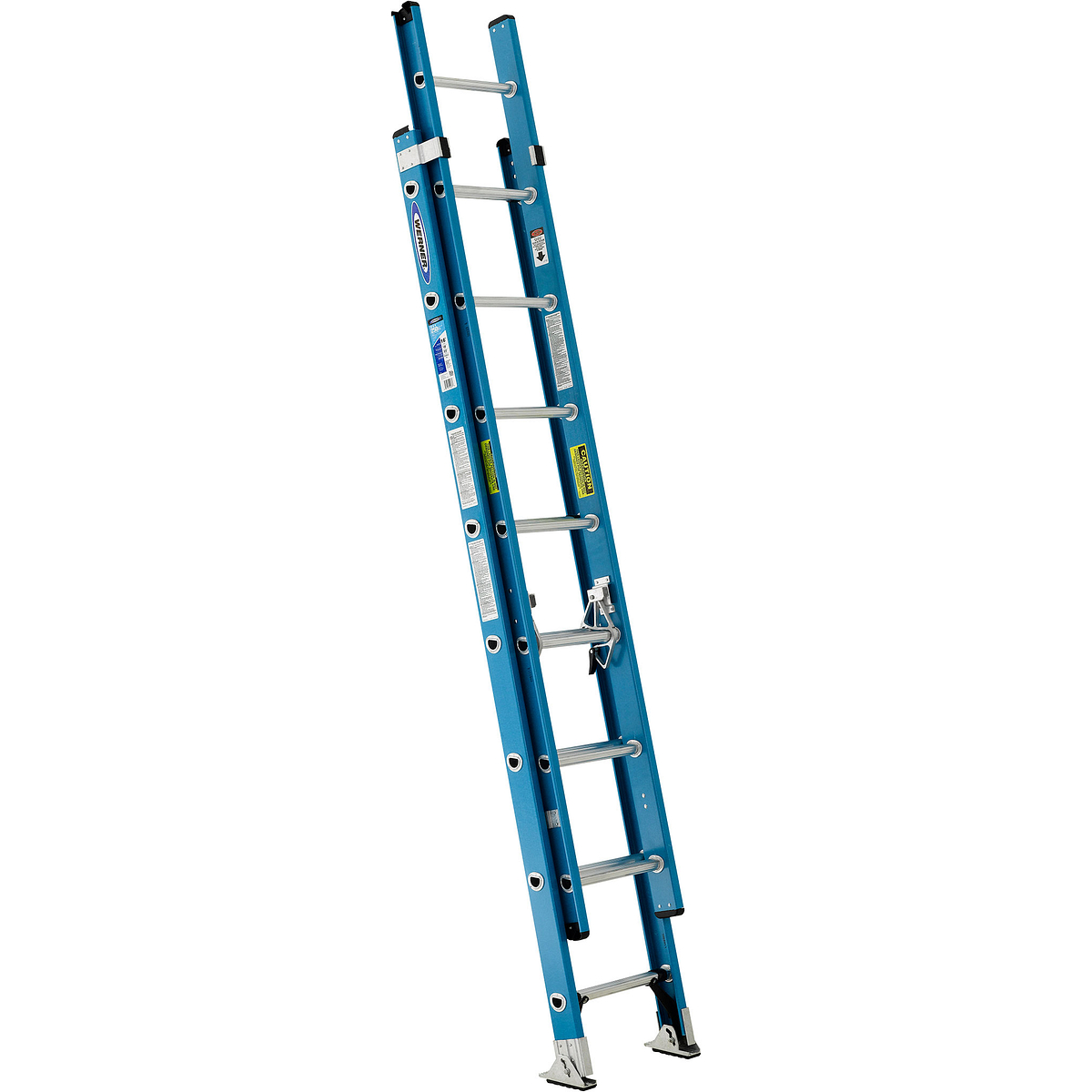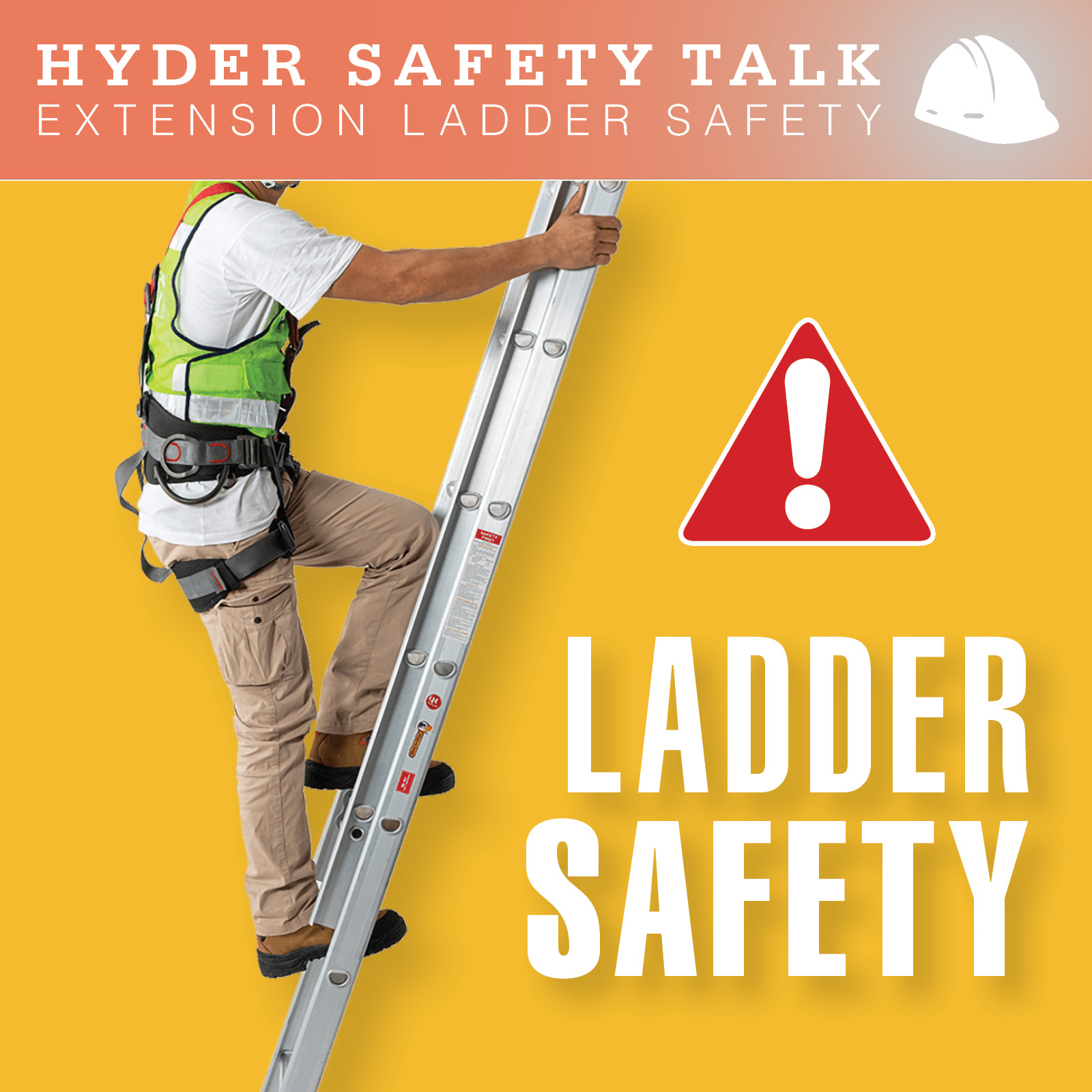Extension ladders are essential tools for reaching high places. They are versatile and easy to use.
Understanding how they work can make tasks safer and more efficient. Extension ladders consist of two or more sections that slide past each other to adjust the height. They are designed to be stable and secure when extended. Knowing the right way to set up and use an extension ladder is crucial for safety.
This blog will explain the basics of how extension ladders work, from their structure to their operation. Whether you are a DIY enthusiast or a professional, learning about extension ladders can help you complete your tasks with confidence. Let’s dive into the details of these helpful tools.

Credit: www.laddersukdirect.co.uk
Introduction To Extension Ladders
An extension ladder is an essential tool for many tasks. It is used in construction, home repair, and various other applications. Understanding how extension ladders work can help you use them safely and efficiently.
Purpose And Uses
Extension ladders help you reach high places. They are useful for tasks like painting, cleaning gutters, and roof repairs. These ladders are versatile and can be adjusted to different heights. This makes them ideal for both indoor and outdoor use.
Basic Structure
An extension ladder consists of two main sections:
- Base Section: The bottom part that stays on the ground.
- Fly Section: The part that extends upwards.
The ladder has rungs for climbing. The rungs are spaced evenly to provide stability. It also includes locks to keep the sections secure. The locks prevent the ladder from collapsing while in use.
Extension ladders can be made from various materials. Common materials include aluminum, fiberglass, and wood. Each material has its own benefits and drawbacks. Aluminum is lightweight but can conduct electricity. Fiberglass is non-conductive but heavier. Wood is sturdy but can be affected by weather conditions.

Credit: www.wernerco.com
Types Of Extension Ladders
Understanding the types of extension ladders can help you choose the right one for your needs. Extension ladders come in different materials and designs, each offering unique benefits. Knowing these variations will make your work easier and safer.
Material Variations
Extension ladders are made from different materials. The material affects the ladder’s weight, durability, and cost. Here are the main types:
- Aluminum: Lightweight, rust-resistant, and affordable. Ideal for general use.
- Fiberglass: Stronger and more durable. Suitable for electrical work as it is non-conductive.
- Wood: Heavy and less common. Often used in construction.
Design Differences
Extension ladders also come in various designs. Each design offers specific features:
- Two-Section Ladders: Most common. Consists of two sections that slide to extend.
- Three-Section Ladders: Offers greater reach. More compact when retracted.
Here is a comparison table of the different materials:
| Material | Weight | Durability | Cost | Best For |
|---|---|---|---|---|
| Aluminum | Light | Moderate | Low | General Use |
| Fiberglass | Moderate | High | Moderate | Electrical Work |
| Wood | Heavy | Low | Low | Construction |
How To Set Up An Extension Ladder
Setting up an extension ladder correctly is crucial for safety and effectiveness. This guide will help you understand the steps to set up an extension ladder properly. Follow these steps to ensure a secure and stable setup.
Choosing The Right Location
First, you need to choose a location for your ladder. The location should be firm and level. Avoid placing the ladder on uneven or slippery surfaces. This could lead to accidents. Ensure there are no obstacles around. Clear the area of any debris or tools. A clean workspace is a safe workspace.
Securing The Ladder
Once you have chosen the right location, it’s time to secure the ladder. Follow these steps to ensure your ladder is stable:
- Check the ladder for any damage before use. This includes rungs, locks, and feet.
- Extend the ladder to the desired height. Ensure the locks are fully engaged.
- Position the base of the ladder one-quarter of its working length away from the wall or structure.
- Ensure the top of the ladder is resting securely against the wall or structure.
- Secure the ladder by tying it off at the top. Use a rope or ladder stabilizer for added security.
By following these steps, you can set up an extension ladder safely and efficiently. Remember, safety first!
Safety Tips For Using Extension Ladders
Using an extension ladder requires careful attention to safety. Knowing the right techniques and maintaining your ladder can prevent accidents. Here are some essential safety tips for using extension ladders effectively.
Proper Climbing Techniques
Proper climbing techniques are crucial for safety. Always face the ladder when climbing up or down. Use both hands to grip the rungs. Keep your body centered between the side rails to maintain balance.
Maintain three points of contact at all times. This means two hands and one foot, or two feet and one hand should be in contact with the ladder. Avoid overreaching while on the ladder. Instead, move the ladder closer to your work area.
- Face the ladder while climbing.
- Keep your body centered.
- Maintain three points of contact.
- Move the ladder instead of overreaching.
Inspection And Maintenance
Regular inspection and maintenance of your extension ladder are essential. Before each use, inspect the ladder for any visible damage. Check for cracks, bends, or missing parts. Ensure that the ladder’s feet are not worn out.
Lubricate moving parts to prevent rust and ensure smooth operation. Keep the ladder clean and dry. Store the ladder in a safe place, away from harsh weather.
| Inspection Task | Action |
|---|---|
| Check for cracks or bends | Repair or replace damaged parts |
| Inspect ladder feet | Ensure they are not worn out |
| Lubricate moving parts | Use appropriate lubricant |
| Keep ladder clean and dry | Wipe down after each use |
- Inspect the ladder before each use.
- Check for any visible damage.
- Lubricate moving parts regularly.
- Store the ladder in a safe place.
Common Mistakes To Avoid
Using extension ladders can be tricky. Many people make common mistakes that can lead to accidents. Understanding these mistakes can help you use your ladder safely and effectively. Let’s discuss some of the most frequent errors and how to avoid them.
Incorrect Placement
One of the most frequent mistakes is placing the ladder incorrectly. Always ensure the ladder is on a stable, level surface. If the ground is uneven, the ladder can tip over.
Proper placement is crucial for safety. Avoid placing the ladder on slippery surfaces. This includes wet grass, polished floors, or loose gravel. Use a ladder with non-slip feet for extra security.
Follow the 4-to-1 rule. For every 4 feet of ladder height, place the base 1 foot away from the wall. This helps maintain balance and stability.
Overloading
Another common mistake is overloading the ladder. Every ladder has a weight limit. Exceeding this can cause the ladder to break or collapse.
Check the ladder’s weight rating before use. This rating includes your weight and any tools or materials you carry.
Use the following table to understand ladder weight ratings:
| Ladder Type | Weight Limit (lbs) |
|---|---|
| Type I | 250 |
| Type IA | 300 |
| Type IAA | 375 |
Always stay within the recommended weight limits to ensure safety.
- Do not carry heavy tools while climbing.
- Use a tool belt to distribute weight.
- Avoid sudden movements that can cause imbalance.
Innovations In Extension Ladders
Extension ladders have come a long way from their basic designs. Modern technology has introduced several innovations that make them safer and more efficient. These advancements cater to the needs of different users, ensuring versatility and ease of use. Let’s explore some of the latest features and future trends in extension ladders.
New Features
Recent years have seen many new features in extension ladders. These features enhance safety, convenience, and functionality.
- Lightweight Materials: Modern ladders use aluminum or fiberglass. These materials are strong yet lightweight.
- Locking Mechanisms: Newer ladders have advanced locking systems. These provide better stability and prevent sudden collapses.
- Adjustable Heights: Some ladders offer adjustable height settings. This makes them suitable for various tasks.
- Non-Slip Rungs: Many ladders now have non-slip rungs. These ensure a safer grip for users.
Future Trends
The future of extension ladders looks promising with continuous innovation. Here are some trends to watch for:
- Smart Ladders: Future ladders may include smart features. For example, sensors that alert users of unsafe conditions.
- Eco-Friendly Materials: More manufacturers are exploring sustainable materials. This reduces the environmental impact.
- Foldable Designs: Expect more compact and foldable designs. These will be easier to store and transport.
- Enhanced Stability: Innovations in stability will make ladders even safer. Look for improved base designs and anti-slip features.
These innovations show a clear focus on user safety and convenience. Extension ladders are becoming more versatile and user-friendly. Stay updated with these trends to make informed choices for your needs.

Credit: www.hyderinc.com
Frequently Asked Questions
How Do Extension Ladders Work?
Extension ladders have two sections that slide apart. You can extend them to reach high places. Lock them securely before climbing.
What Are The Parts Of An Extension Ladder?
An extension ladder has rails, rungs, fly section, base section, and locks. Each part ensures stability and safety.
How Do You Extend An Extension Ladder?
Pull the rope or push the fly section upwards. Lock it at your desired height. Ensure it’s secure.
How Can I Use An Extension Ladder Safely?
Place the ladder on a stable surface. Maintain a 75-degree angle. Lock it properly. Climb slowly and carefully.
What Is The Maximum Height Of Extension Ladders?
Extension ladders can extend up to 60 feet. Check the manufacturer’s guidelines for maximum height and weight limits.
Conclusion
Understanding how extension ladders work ensures safety and efficiency. Always choose the right ladder for the job. Extend and lock each section properly. Never overreach while on the ladder. Follow safety guidelines to prevent accidents. Proper use of extension ladders makes tasks easier and safer.
Now, you’re ready to tackle projects with confidence. Stay safe and work smart.
Recent Posts
Maintaining clean gutters is essential for preventing water damage to your home, and choosing the best ladder for cleaning gutters can make the job much easier and safer. With so many options on the...
Best Ladder for Cleaning Caravan Roof: Top Picks for You Every Adventure!
Today we will discuss the best ladder for cleaning caravan roof. Cleaning caravan roofs is one of the crucial tasks.After many days, a caravan roof can get dirty by debris, dirt, and grime. These can...
